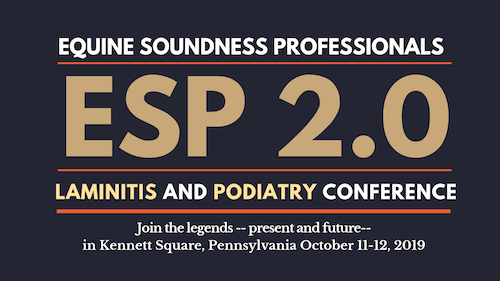 |
| Collateral ligament injury (black arrow) on a case diagnosis by Dr. Sue Dyson at the Animal Health Trust in Newmarket, England |
One of the many popular topics covered by Hoofcare & Lameness is the importance of the collateral ligaments of the coffin (distal interphalangeal, DIP) joint. Sue Dyson, lameness veterinarian of the Animal Health Trust in England, has written a super article on injuries to the ligaments and how to identify them.
We pair this with a compelling discussion of the movement of the coffin (distal phalanx, P3) bone by Jean-Marie Denoix. He termed the word "collateralmotion" to describe how the coffin bone moves slightly to the inside or outside, in a gliding motion, which most people do not usually consider when they consider the foot and what might cause lameness.
The collateral ligaments stabilize the coffin joint and allow the limited amount of gliding that a sound horse requires. Excess gliding may injure the ligaments, causing lameness. Conversely, excess gliding (such as "lunge til dead" training techniques) can injure the ligaments.
It certainly is hard to illustrate, however!
Denoix has a superb article in the January 2005 edition of
Equine Veterinary Journal about how the weightbearing foot's coffin bone moves under the short pastern bone when a horse is turning. The article was dedicated to the memory of Jean-Louis Brochet, Denoix's sidekick and farrier who died tragically in Paris a few years ago of an unknown disease he contracted while working in Florida.
We are very grateful to have Drs Denoix and Dyson on our editorial board. Both of them will be speaking at the 3rd International Laminitis and Equine Diseases of the Foot Conference in Palm Beach, Florida November 4-6.




